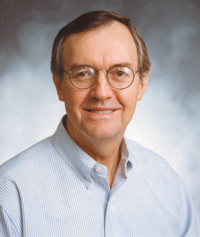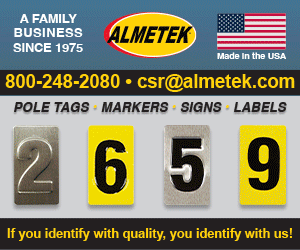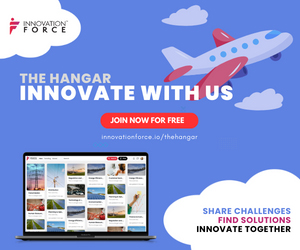
This marks the third installment in our 2007 Automation/IT Leadership Series featuring in depth interviews with senior executives of major suppliers to the utility marketplace. This month, my one-on-one interview is with Mr. Guerry Waters, Vice President - Industry Strategy and Marketing, Oracle Utilities Global Business Unit. In preparing for our discussion, I found myself feeling as though I’d known Guerry for a lot longer than I actually have. That’s mainly because his views about the industry and mine have had almost uncanny parallels, both in timing and substance, over the past couple of years. (Refer to the Utility Horizons™ column and Guerry’s AMI article in the Sep/Oct 2006 issue at http://www.electricenergyonline.com/magazine.asp?m=9&magid=37)
I had a chance to sit down with Guerry over a cup of coffee at the DistribuTech Conference in San Diego this past February, and it was immediately evident that Guerry is a man on a mission when it comes to articulating those views. Indeed, only a few short months after the merger of SPL WorldGroup into Oracle, he seems to have already figured out exactly where he wants to take this world-class company from a utility sector perspective. I’m sure you will find the visions and concepts he generously shares with us in this interview to be insightful and instructive.
- Mike Marullo,
Automation/IT Leadership Series Editor
EET&D: I think we can both readily agree that this is a time of sea change all across the utility industry, both for the utilities themselves as well as for suppliers. The recent acquisition of SPL WorldGroup – the company from which you came to Oracle – is arguably a part of that wave of change. How would you characterize the forces and incentives that brought these two companies together at this particular time?
Waters: The merger offers utilities what we describe as “the world’s most complete suite of end-to-end information technology solutions for utilities.” It brings together several different elements, including but not limited to Oracle’s ERP (Enterprise Resource Planning), database and infrastructure software; Siebel’s CRM (Customer Relationship Management) for larger competitive utilities’ call centers and specialized contacts and sales; and SPL’s utility-specific revenue and operations management applications.
EET&D: In your view, what should our readers expect the effects and benefits from this combination to be?
Waters: In bringing all these applications together, Oracle is responding to utilities’ need to reduce costs and business complexity. Oracle now offers utilities the option to lower total cost of ownership through access to a single global vendor. Additionally, we offer pre- integrations that reduce implementation and maintenance costs. But because our applications are fundamentally stand-alone, utilities can be sure that going with Oracle doesn’t lock them into an IT structure or suite that may not suit them in the long run or respond optimally to changing markets.
EET&D: What new developments might we see in the longer term?
Waters: Right now, the global utilities market is experiencing a great deal of change. We believe that, as applications advance to meet emerging needs, utilities will clearly see the advantages of choosing multiple applications from a single vendor. However, over the longer term, we will have the opportunity to demonstrate that Oracle has retained its commitment to compete head-to-head with single best-of-breed products.
EET&D: Will utilities still be able to take advantage of their own applications of choice as these products become more integrated?
Waters: Utilities will continue to get the features and functions that help them meet market challenges. But at the same time, as they choose two, three, or more of our solutions, they’ll also begin to experience an added value when best-of-breed applications integrate out of the box to address cross-organizational business processes and best practices.
EET&D: How much of the applications spectrum can you readily address today?
Waters: Oracle utilities applications already address demand/ response programs, increased grid efficiency, better scheduling of field crews, and new infrastructures to support advanced metering. And of course, Oracle offers an additional, complete suite of general business and CRM applications for utilities plus outstanding middleware and technology solutions.
EET&D: Is there one element or characteristic that you feel really sets you apart?
Waters: Our global network of partners and affiliates allows us to interact effectively with utilities and systems integrators around the globe to deploy worldwide best practices. There are very few companies that have the depth and breadth of global capabilities we can bring to bear quickly and comprehensively.
EET&D: That reminds me that I recently heard that Oracle has announced that it intends to become the #1 applications vendor to utilities worldwide; displacing SAP, which currently has almost twice as many utility applications customers as does Oracle. Can you offer some specifics about how you intend to achieve that objective?
Waters: Oracle sees utilities as requiring a core of mission-critical applications that, while they can all be used stand-alone, rest fundamentally on a common, standards-based architecture and a common vision to help utilities adapt to change and minimize its negative consequences. I cannot speak for SAP, of course, but my impression is that their vision of mission-critical utility applications is considerably narrower. For example, we offer network management as an integral part of the package and also a fully functional mobile workforce management system, where their solution relies on third-party technology from partners.
That doesn’t mean we “do it all,” of course. We have very important technology partnerships with companies like Twenty First Century for IVR and Cellnet for communications. We’re working with several other technology companies in the Smart Energy Alliance to help utilities develop and implement the advanced metering packages designed to meet their goals.
At the same time, Oracle’s vision is of a single-vendor core suite from which integrated business processes seamlessly rise.
EET&D: Turning now to the utility perspective, I recall your mentioning during our conversation in San Diego that Oracle had identified what you consider to be the top ten business requirements of utilities. (See Inset ) Perhaps you could begin by briefly explaining what went into the analysis process and how you arrived at those conclusions.
Waters: Strategic analysis of industry trends and directions is fundamental to ensuring we provide the right applications to utilities at the right time. We’re constantly talking about these issues with customers and potential customers as well as industry analysts. Publications like yours are vital in helping the utility community share understanding and direction. We also commission surveys that help us keep pace with customer thinking, like several we did over the past year on meter data management.
EET&D: I think it would be useful to hear your personal views and interpretation of how these requirements might relate to automation/IT solutions, whether they may be immediate or further down the road.
Waters: What’s particularly important for IT is the way these trends interact to produce the need for new applications and combinations of applications. Look, for instance, at requirements 2, 3, and 4. Today we face potentially cataclysmic environmental changes like global warming and the permanent destruction of our remaining wilderness. Electric utilities want to rise to that challenge and also want to add more renewables to the mix. They want to switch some power use to off-peak, when base generation essentially goes to waste.
But many are discovering that their metering structure can’t handle net metering; nor can it handle interval metering or even time-of-use. Next, they find that even if they had the right metering infrastructure, the grid isn’t robust enough to handle on-ramps for non-dispatchable renewables or the complexities of universal demand-response programs. And finally, even if all that were already in place, the vast majority of consumers don’t have the devices in the home necessary to take full advantage of these programs.
This is where Oracle comes in. We have the resource depth to focus multiple applications on complex goals and to help utilities manage the individual applications and process changes that can result in positive environmental and economic outcomes.
EET&D: Are there things that you feel utilities must do or will do to change their traditionally conservative, slow-moving posture toward change?
Waters: I have to say that, with regard to issues like creating new services for customers and stepping up to the environmental plate, utilities today are moving forward smartly. Take advanced metering as an example. In March, Kema Consulting identified 12 utilities with an aggregated total of more than 39 million customers as issuing RFPs, RFIs, or otherwise signaling a direction toward advanced metering implementation.
Moreover, it appears that the majority of utilities electing advanced metering also elect to implement a relatively new concept: a meter data management application that’s separate from the various data-using applications like billing and distribution management. UtiliPoint, for instance, reports that in just one year, 2005 to 2006, North American annual meter data management revenue quadrupled to more than $17 million. Moreover, it is anticipated that revenue will grow to more than $22 million, based on announced projects alone.
EET&D: What do you anticipate as far as what the utilities’ expectations might be (i.e., from suppliers) for meeting those objectives?
Waters: To achieve that kind of posture and flexibility, we think that most utilities will be inclined to choose a strong, multi-faceted vendor that has specific abilities and characteristics. Key among those is the ability to address technology solutions holistically and exhibit a detailed and comprehensive understanding of the utility business.
EET&D: What else might they expect that would be consistent with these trends?
Waters: It will also be important that vendors use standards-based applications and architecture that will help utilities to innovate and that will ensure that the entire technology/application offering underpins coherent, cross-organizational business processes in order to keep pace with ongoing utility business and market changes.
EET&D: Let’s get back to the role of automation/IT suppliers like Oracle; what should we expect from the supplier community as regards adapting to these changing expectations by the utilities?
Waters: Well, certainly there are huge implications for suppliers that we believe will transform their role – albeit in a very positive way. Specifically, there are ten elements that we aggregated from research conducted by several leading research organizations that I think fairly summarize the expectations many utilities have in this new era of challenges and changes. Those are:
1. Template-based solutions for common industry segments
2. Pre-integrated solutions for reduced project risk 3. Proven technology with scalability and performance
4. Flexible, converged and open infrastructure
5. Support for new industry initiatives (e.g., AMI, green energy, etc.)
6. Expanded customer-service interactions (e.g., web, contact center, phone/PDAs, etc.)
7. Improved response for new and evolving market regulations
8. User interfaces that support business processes
9. Accommodation of existing (legacy) infrastructure
10. Integration to support third-party applications
___________________________
Top 10 Business Requirements of Utilities
1. Contain/remove costs in all business activities to meet expectations of all stakeholders (including investors, customers, and regulators).
2. Respond effectively to environmental requirements and challenges.
3. Maximize the value of advanced metering infrastructure.
4. Maximize grid efficiency, reliability, and resiliency
5. Determine and address the root causes of current business performance shortfalls.
6. Provide customer choice in areas such as:
• Energy content (“green” /other electricity).
• Rate structure (flat/time-of-use/interval).
• Type of service (delivery-only, net metering).
• Bill presentation and payment (on-line, third-party, direct debit, mail).
• Value-add services (remote equipment control, outage notifications).
7. Adapt to workforce changes, including aging workforce, turnover, and use of contractors and outsourcers.
8. Respond to customer demand for improved service at the same or lower cost.
9. Attract and retain profitable customers.
10. Schedule the workforce effectively to ensure the right people, materials, and tools are at the right place at right time.
___________________________
EET&D: To sum things up, how long do you think it will take for suppliers to embrace these expectations?
Waters: I really can’t speak for others, but I can tell you that we are committed to supplying all of these needs at the pace the market is prepared to accept them. There’s no point in getting ahead of your market. That’s just a prescription for financial losses that stymie long-run progress.
EET&D: Can you elaborate a little more on what you mean by that?
Waters: Let me give you an example from our Network Management product. To take full advantage of advanced metering, utilities need much closer integration across outage management, AMR, and mobile workforce applications. Keeping pace with the market means introducing those innovations now, neither before nor after utilities can use them. Similarly, the international focus on dealing with an aging grid has put a new focus on needs like Volt/VAR optimization and support for automated throw-over field devices. Now is the time to respond to these needs.
EET&D: It seems like staying in sync with the market can be a bit of a challenge since most utilities want progress, but they also want their legacy investments to be protected while the migrations to new products and platforms move forward. What can you suggest that might help assuage those very legitimate concerns?
Waters: Keeping pace with the market is the same approach we’re using as we move toward increased application pre-integration. Many—possibly most—of our customers still seek the feature and function richness associated with stand-alone applications. That’s why we will continue to supply, best-of-breed products.
EET&D: But won’t those stand-alone applications be disappearing at some point soon?
Waters: No, we don’t have any plans to narrow those choices, even when products might appear to overlap. But behind the scenes, we’re working to make sure that as utilities start to experience the advantages of pre-integrated business processes, Oracle will be there with the combination they seek: A fully pre-integrated suite that retains all the best-of-breed functionality without sacrificing application richness and flexibility.
EET&D: Well, it sounds like you have everything under control. As you know, one of the primary objectives of these interviews is to afford our readers insights into what they can expect from their suppliers; I think we can safely label this one Mission Accomplished! Thanks again for sharing your thoughts and plans with us and hope that you will do so again, soon and often.








